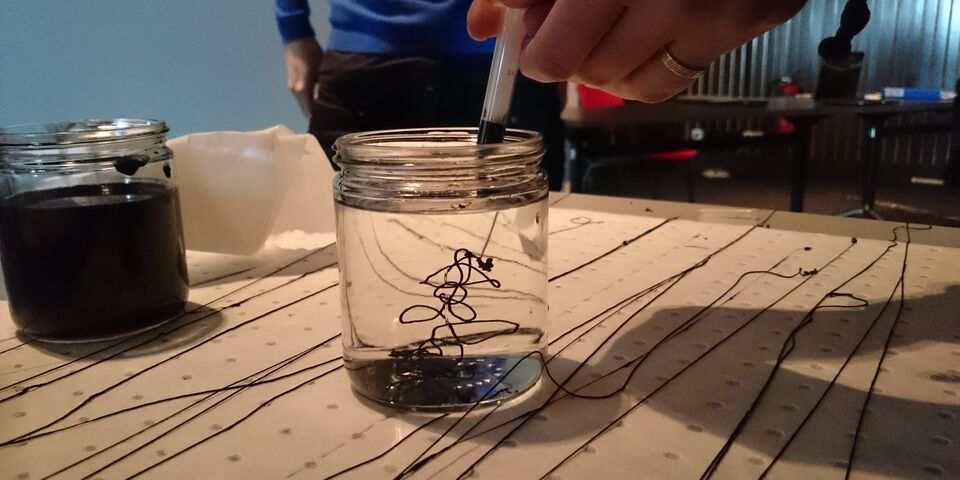From blood to screen
Getting the opportunity to make a super strong fiber of liquid crystals yourself with a syringe in a beaker. The recipe formed an appropriate finish of the public morning of the Playing Colloidal Mikado workshop, organized by the European DiStruc network. Prior to the demonstration, the audience in de Zwarte Doos was brought up to date on the area of expertise of DiStruc: liquid crystals and other so-called colloids - particles with a size of approximately one micrometer.
The morning began with a presentation by Roel Dullens, a scientist who works in Oxford. In this presentation he introduced the audience to the wondrous world of colloids. All particles significantly bigger than molecules and sizably smaller than a grain of sand can be called colloids, regardless of the material they are made of.
Usually they can be found in a liquid medium, Dullens explained. Examples of such colloidal systems which he mentioned were milk, blood, clay and paint, but also the gem we know as opal, in which the small particles - the size of the wavelength of light - are responsible for the most exquisite color combinations.
After Dullens’ presentation the éminence grise of the research into liquid crystals, David Dunmur, provided an overview of the development since their discovery at the end of the 19th century of these special colloids, which we know best from LCD screens.
That liquid crystals have still other applications became quite obvious through the hands-on demonstration of the firm of Teijin Aramid from Arnhem, one of the industrial partners within DiStruc. After the presentation by Dunmur a table filled with glassware was rolled into the Filmzaal. The people present were allowed personally to empty a syringe of liquid crystals into a beaker of salt water. With a certain measure of dexterity this resulted in meters-long fibers, which were displayed on the table.


Discussion